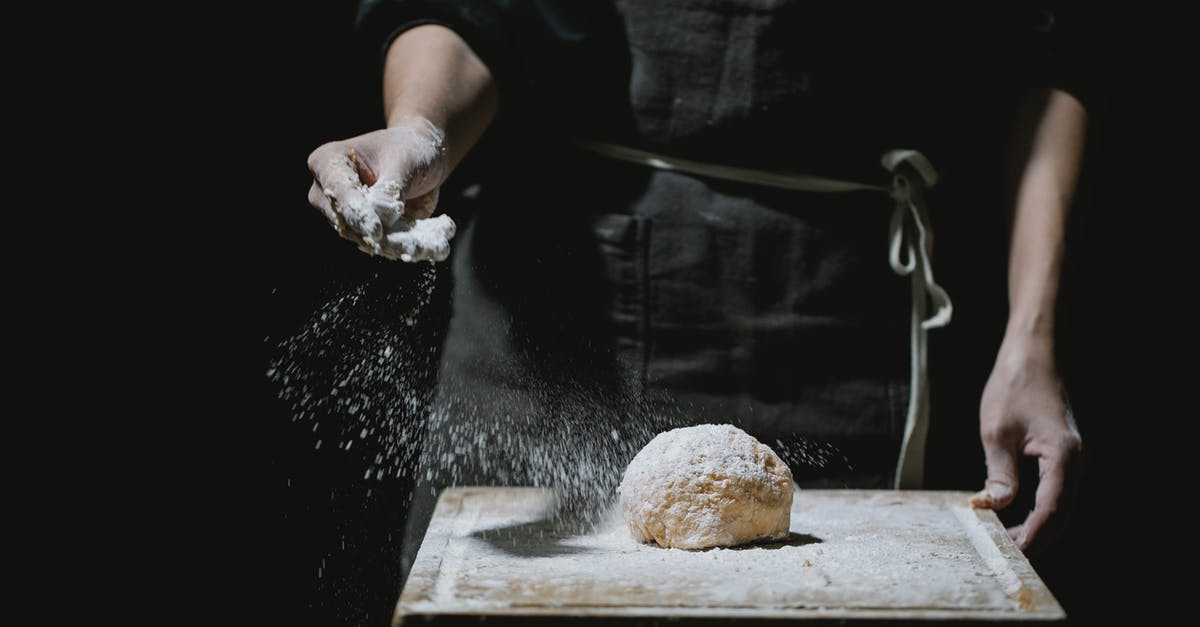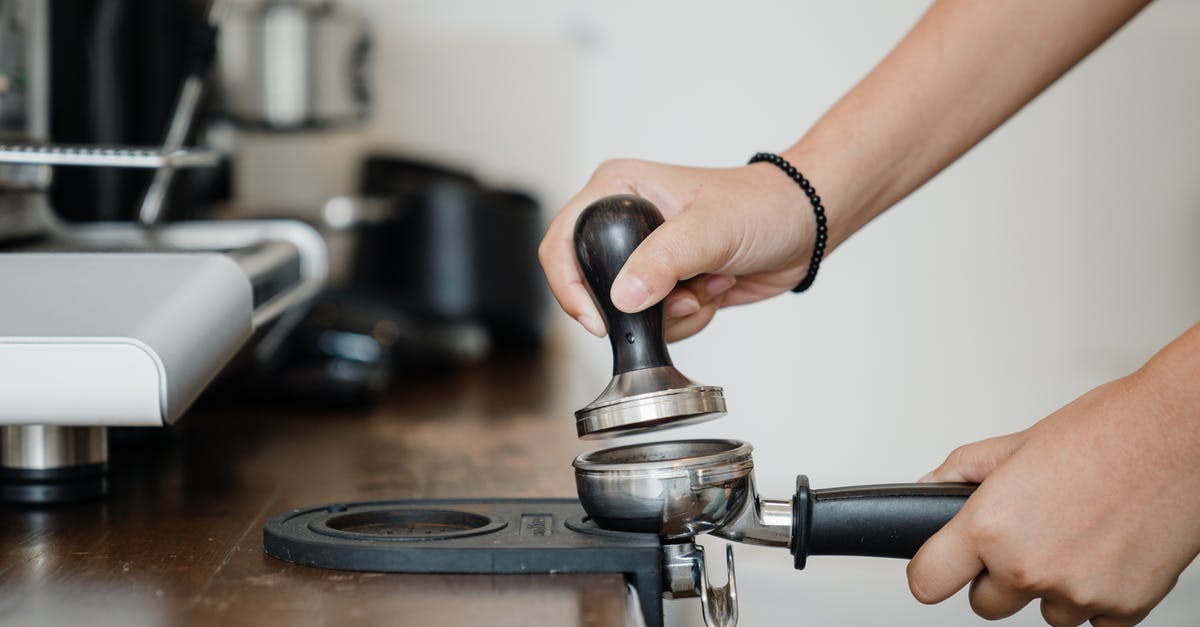Why doesn't my cookie recipe work in the US?

This may sound like a stupid question, but I am not sure what to do. Even though I am not a professional, I was on a course and I am not allowed to post any recipe [copyrights thing].
I relocated from Israel to the States (California) and I have some recipes with me, all using accurate units of measurement in grams.
When I decided to bake some cookies, I noticed the dough was not even close to what I know... it was really dry and instead of it to be 1 piece at the end of mixing, it was still powder, no matter how long it was processed [and it shouldn't be processed a lot at all].
Reading a bit online, sounds like these results are usually because of too much flour, but as I said I know this recipe and it is working in my home country.
I wonder if people in the US know the differences in ingredients between [I assume] Europe to the US [I think butter and flour mainly], if I need to do some conversions or maybe to buy a different brands?
The reason I'm not sure it is that important is because we are talking in "bakers percentage", so in general flour is 100% and in cookies case, the fat is ~50%, I can tell the rest of ingredients which are: almond flour [ground almonds basically], shredded coconut, ground sugar, eggs, butter and salt.
Since its' all measured in grams, I feel like ingredients [mainly flour, butter] are different here than in Israel, but no idea how : )
I don't do anything differently as some people suggested... I made them several times and what I did here is no different than the way I made them back in my home country :)
UPDATE:
Thanks all! Will try to provide all answers again :)
Before that..Please don't modify my post unless it is inappropriate [which usually means inappropriate language]
This is a community not an English class - I barely recognized my own post....If the person is not an American, having English mistakes is understandable
In addition, the "UPDATE" titles is easier to manage when you can't just post in your own thread
Anyhow.....I mentioned the ingredients in one of the small post, which probably makes it hard to notice - I know you all want the exact recipe, but I can't and I know the recipe works, so it is not the way I do it but with what ingredients - This is why I'm focusing on the differences than the quantity
Flour 100% - Don't have the brand cause I moved it into a box, but it is an AP one, which I think is mistake #1 - I will try a white flour instead
[The rest are relative to the flour]
Butter ~90% - I used an UNSALTED one. Tried "Lake Lands" & Kerrygold - Both are not that far from the Israeli one, so TBH i'm not that worried here -I also changed the quantity to match the Israeli values
Eggs ~5%
Almond Flour + Coconut + Granulated Sugar - ~85%
Almond Flour - Bob'd Red Mill super-fine almond flour - kind of yellow package which says that this is "simply skinless, blanched almonds that have been ground to a super-fine texture"
UNSWEETENED shredded coconut - blue\green "Let's Do organic" package - One thing I said is that I haven't noticed the reduced fat - 36% lass fat according to package - Not sure this is what we have in Israel
Granulated Sugar - I think this is another mistake I already saw in one of the comments. I have "Wholesome" Organic Powdered Confectioners Sugar - looks like a purple package to me..some will say purple-pink
Also have salt but that not a lot at all
Best Answer
I can't tell you exact differences, but it is known that differences do exist.
- US flour is frequently bleached. This is illegal in the EU, I don't know how it is in Israel.
- I don't know what flour your recipes are made for. In the US, "all purpose" flour tends to be closest to German 550 flour, and cake recipes in Europe may have been made with German 405 flour (or the local equivalent) in mind, which has a lower protein content.
- US flour can be made from different cultivars than those used in Europe. The best known difference shouldn't make a difference to your cakes - in North America, they grow a lot of hard winter wheat and make so-called bread flour out of it. But even with soft wheat, which is used for all-purpose flour, there is no reason to use the same cultivars, so they probably differ.
- Israel is hot and arid. Flour absorbs a little bit of humidity from the air during storage, and it is possible that, if you are now living in a more humid area, this "prehydration" differs. I cannot tell you what the exact effect is on the final binding power of the flour, my intuition actually would expect the effect to go in the other direction - but I have seen (I think even researched) in another question on the site the difference when flour is stored at different humidities and it is mathematically significant.
- the growth conditions are different between Israel and the surrounding countries, and the USA. While wheat is a global commodity, I wouldn't be surprised if producers gear their blend towards a binding capacity that is traditionally expected in a locale, else they risk selling flour which gains reputation for "not working".
All this is only a list of possible causes, but it doesn't help you predict how the dough will differ. Luckily, this is a problem which can easily be addressed empirically. Try just cutting the flour back from your recipes and see what the results are. I would go for maybe 10% less the first time and then continue in smaller increments in the desired direction. Another potential solution is to switch to pastry flour if you have been using all purpose - but it has lower protein content than 405, so if the result is too loose, you might have to start mixing pastry flour and all purpose flour.
As a final note, pay attention not to buy self-rising flour (unless your recipe calls for it). It won't lead to the dry results you described, but it will give you other problems.
Pictures about "Why doesn't my cookie recipe work in the US?"



Why are my cookies flat and greasy?
Adding too little flour can cause cookies to be flat, greasy, and crispy. Most recipes assume you'll use all-purpose, but if you want a lighter, crumblier cookie texture, choose one with a lower protein content such as cake-and-pastry flour. Baking soda helps cookies spread outward and upward while cooking.How can I make my cookies fluffier instead of flat?
9 Tips to RememberWhy are my cookies not dense?
Thus, if your butter is too cold, your cookies will be denser, and they will likely not spread enough in the pan when you bake them. In general, you want your butter to be cool, but not cold. The right way: Let your butter sit out for 15 minutes (but not longer \u2014 see below) before creaming.Why do my cookies have an aftertaste?
But more baking soda doesn't mean more rise. If you use too much, it will also leave an aftertaste (see formula below). The difference between the two is that baking powder already contains the acidic component, usually cream of tartar, along with the baking soda and cornstarch to prevent clumping.Kelly Clarkson - Stronger (What Doesn't Kill You) [Official Video]
More answers regarding why doesn't my cookie recipe work in the US?
Answer 2
With cookies you need to be aware of ALL the things that can be different. First of all the flour, which can be enriched, bleached etc., and which rarely has a grade that tells you how finely milled it is. If you bought relatively coarsely-milled flour, such as the flour that's usually used to make shortbread, then you might get the results you described.
The second thing is butter. In the US, the fat content might be (and probably is) lower than in Israel.
Next, the sugar: sugar made from cane vs. beets can lead to different results. And here, too, the fineness of the grind will have a noticeable effect: powdered sugar gives a very different consistency than granulated.
Additives, like raisins or chocolate. Not only the fat content might be different but also the water content. Remember it's the water that helps develop gluten.
Looking at your recipe would be the best to pinpoint the culprit.
Answer 3
I think it's the fat content of the butter.
I made the family fruit-pie pastry recipe using ingredients from Switzerland, and the pastry basically "melted" in the oven. Previously I had made this exact same recipe many many times in Australia. I suspect that the Swiss butter had extra fat. It's quite normal for butter-fat (and moisture) content to change.
Obviously in your case, the butter-fat content (and perhaps moisture) is significantly less. I guess (speaking as an amateur) I would retry on a smaller batch with ~15% more butter.
I don't think it's humidity, etc. as this would make the result more wet, not extra dry.
Answer 4
This one might be a bit of a stretch, but, if you're making large batches, it might be worth thinking about: How are you measuring liquids?
One of the (many) drawbacks in the US system is reusing the word "ounces" both as 1/16th of a pound (weight) and as 1/16th of a pint (volume). For water, or water-type liquids, there's not really much of a difference; an ounce by volume is approximately the same as an ounce by weight. (I.e. 1 fl oz of water ~ 1 oz dw water).
BUT, if the things you're measuring are more dense than water (e.g. honey or molasses) or less dense (e.g. oil, butter, cream?), using a volumetric measurement instead of a weight (or vice versa) might be enough to throw off your final recipe.
If you were having to convert a metric based recipe to US measuring devices, and you got the measurement type wrong (e.g. you grabbed a measuring cup instead of weighing oil), that might just be enough to throw off a recipe.
I see you've said that you're weighing it all, so this probably doesn't apply, but just in case (or just in case you're having to convert).
Answer 5
My guess would be that it is the almond flour. If you have ever ground up almonds in a food processor, there are 3 stages. First if you only coarsely chop the almonds, they will just be chunks in the dough that don't influence how dry or liquid the dough is at all. In the second stage the almonds will become a fine powder similar to flour, so they will soak up liquid and make the dough drier. Finally, if you continue chopping them in the food processor they will turn into almond butter which is quite liquid. So adding that will make your dough less dry.
So even if the almond flour is just pure almonds without any additional processing steps, they could make your dough both drier and more liquid depending on long they have been ground. Additionally it seems possible to me that in commercial almond flour some oil is removed to force a more powdery consistence. If this is done in the US but not in Israel that would explain the difference and also point the way to a solution. Buy whole almonds, make your own almond flour and see how the recipe turns out.
Answer 6
I am not a professional but in all my experiences I've learnt the recipes require little tuning according to the area altitude weather (Humidity, Room temp.) and specially the ingredients. lets say you were using some X company butter before and you change it to Y. then it changes your recipe as different companies have different moisture content in their butter.
so tune it according to your needs.
Write it down and get it approved from your Sup/Manager whoever is above you assuming if you are asking for professional kitchen.
Sources: Stack Exchange - This article follows the attribution requirements of Stack Exchange and is licensed under CC BY-SA 3.0.
Images: Gustavo Fring, Gustavo Fring, Klaus Nielsen, Ketut Subiyanto
